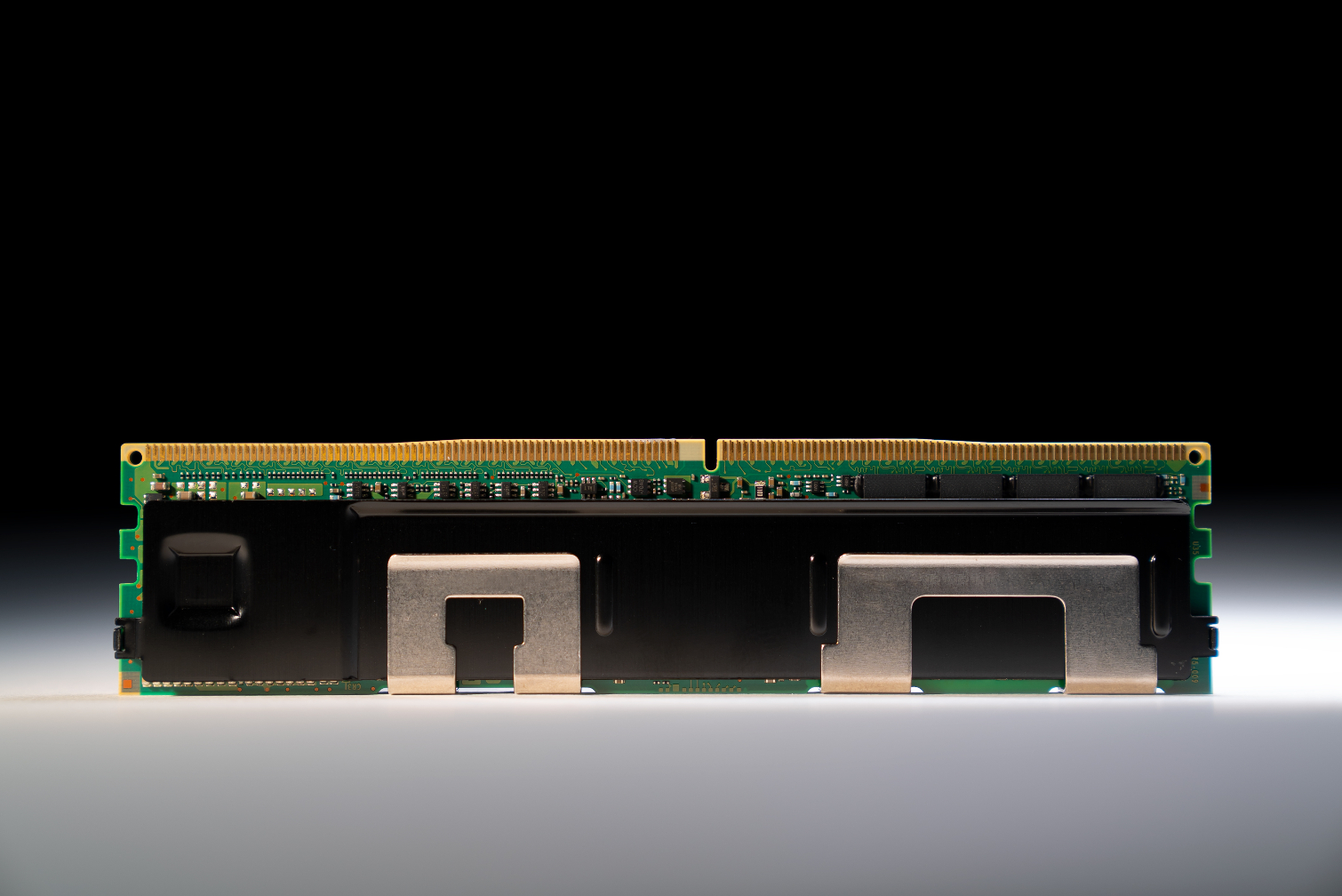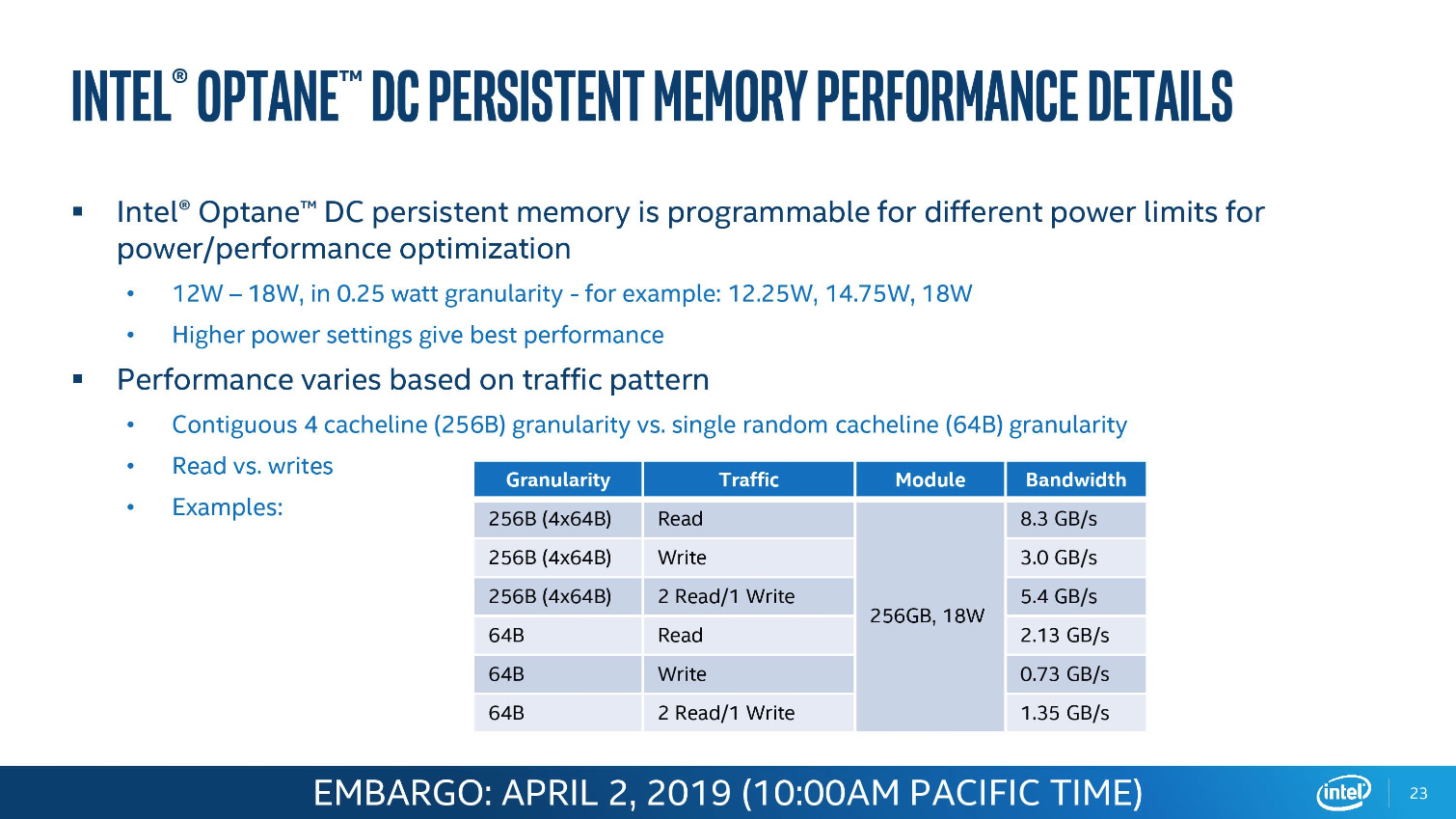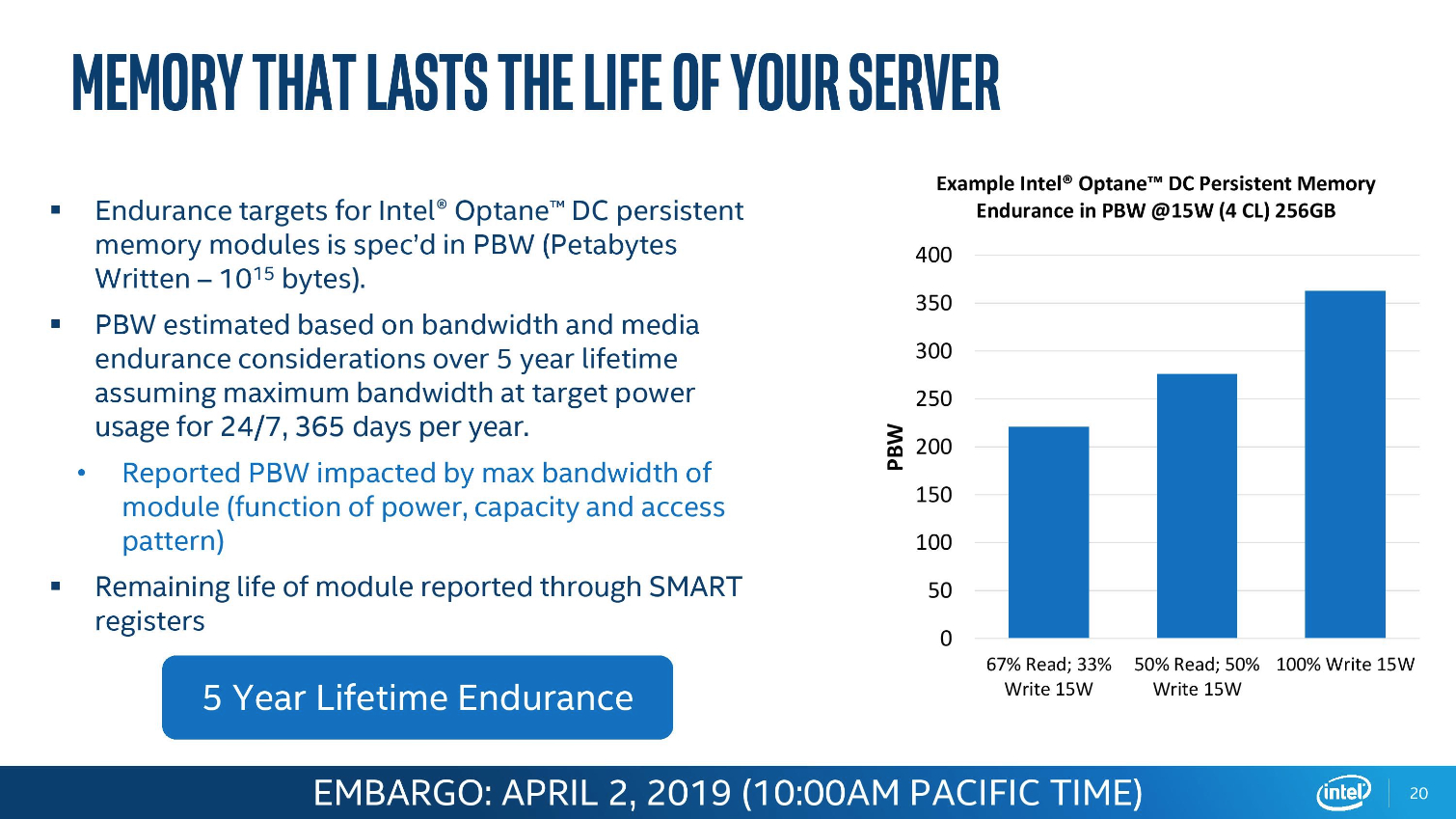Intel Optane DIMM Pricing: $695 for 128GB, $2595 for 256GB, $7816 for 512GB (Update)
Update 4/7/2019: Colfax Direct reached out with its pricing for the modules, including the 512GB Optane DC Persistent DIMMs. We've added the updated pricing below.
Original Article:
Intel's Optane memory can be used as either memory or storage, and it turns out to be pretty competitively priced. Intel's newly released Optane DC Persistent Memory DIMMs slot right into a DDR4-compliant memory slot and promise to fundamentally upset the conventional memory hierarchy as we know it, making memory persistent so it doesn't lose data when it loses power. It also boosts memory capacity up to an astounding 512GB per slot. If that's too much memory for you, Intel also offers 128GB and 256GB sticks.
Unfortunately, this radical new memory is only designed for servers, at least for now, but it is significantly cheaper than DRAM. Intel designed the DIMMs to bridge both the performance and pricing gap between storage and memory but hasn't released official pricing for the new memory yet, instead giving us rough estimates for system-level pricing that often includes volume discounts for OEMs. However, now the Optane DIMMs have popped up at online retailers Colfax Direct, CompSource, and ShopBLT, giving us our first glimpse of retail pricing.
| Row 0 - Cell 0 | 128GB Optane DIMM | 256GB Optane DIMM | 512GB Optane DIMM |
| Intel System Pricing Guidance | $577 | $2,125 | $6,751 |
| CompSource | $892 | $2,850 | - |
| ShopBLT | $842 | $2,668 | $7,816 |
| Colfax Direct | $695 | $2,595 | $8,250 |
| Conventional DRAM | ~$4,500 | Not Available | Not Available |
Colfax Direct has posted pricing for the 512GB modules at $8,250, while the 128GB DIMMs weigh in at ~$695, which is significantly cheaper than CompSource and ShopBLT. The 256GB models command a $2,595 price point. ShopBLT also has the 512GB DIMMs listed at $7,816.
Equipping a full server with this kit is pricey, though. Intel outfitted its example configurations with a copious amount of capacity: twelve 128GB sticks weigh in at a total of $6,924. Stepping up to twelve 512GB sticks pushes the needle up to $81,012, but this is relatively tame pricing compared to what you'd pay for an equivalent amount of DRAM.
For instance, even with the currently low DRAM pricing, the highest-capacity 128GB ECC DDR4 sticks are roughly $4,500 apiece, making the ~$850 asking price for Optane look particularly attractive. New 256GB DRAM sticks are coming to market soon, and pricing hasn't been announced, but you can also expect them to land at significantly higher prices than the Optane DIMMs. Finally, there is no option on the near horizon for 512GB DRAM modules.
Get Tom's Hardware's best news and in-depth reviews, straight to your inbox.
And that's one of the key value propositions of Intel's ultra-dense modules: DRAM simply can't match Optane's density, so you really only have one option for the ultimate in memory density. Optane enables a total of up to 6.5TB of Optane memory in a single dual-socket server, provided you have a Cascade Lake Xeon processor that supports the memory.
| Latency | Optane DIMM | DRAM |
| Idle Sequential Read Latency | ~170ns | ~75ns |
| Idle Random Read Latency | ~320ns | ~80ns |
| Per DIMM Bandwidths | Row 3 - Cell 1 | Row 3 - Cell 2 |
| Sequential Read | ~7.6 GB/s | ~15 GB/s |
| Random Read | ~2.4 GB/s | ~15 GB/s |
| Sequential Write | ~2.3 GB/s | ~15 GB/s |
| Random Write | ~0.5 GB/s | ~15 GB/s |
That said, Intel's Optane DIMMs aren't as fast as DRAM, and they still require at least one DRAM stick in the server. Due to the nature of Intel's Optane, not all workloads will benefit equally from the speedy medium, but they do provide tangible benefits for many workloads. 3D XPoint, the new memory technology behind Optane, is fast enough to serve as a slower tier of DRAM, but it does require tuning the application and driver stacks to accommodate its unique characteristics.
DRAM also has unlimited endurance (with a few caveats), whereas Optane DIMMs are only warrantied for five years of full-on abuse. Intel says that it bases this endurance rating on the maximum possible throughput to the DIMMs for the duration of five years, putting to rest any endurance concerns. Intel also encrypts all data stored on the DIMMs to protect user data.
Overall, the DIMMs consume about three times the power of a standard 8/16GB DDR4 DIMM. Power consumption is a huge consideration in the data center, and gaining 32 times the memory capacity in exchange for three times increase the power consumption is a dramatic improvement.
Wrapping these advantages in a price-friendly package is a game changer, but there are several caveats to the new Optane DC Persistent Memory DIMMs. We're currently working on a full review of the new memory, so stay tuned for more details.

Paul Alcorn is the Editor-in-Chief for Tom's Hardware US. He also writes news and reviews on CPUs, storage, and enterprise hardware.




